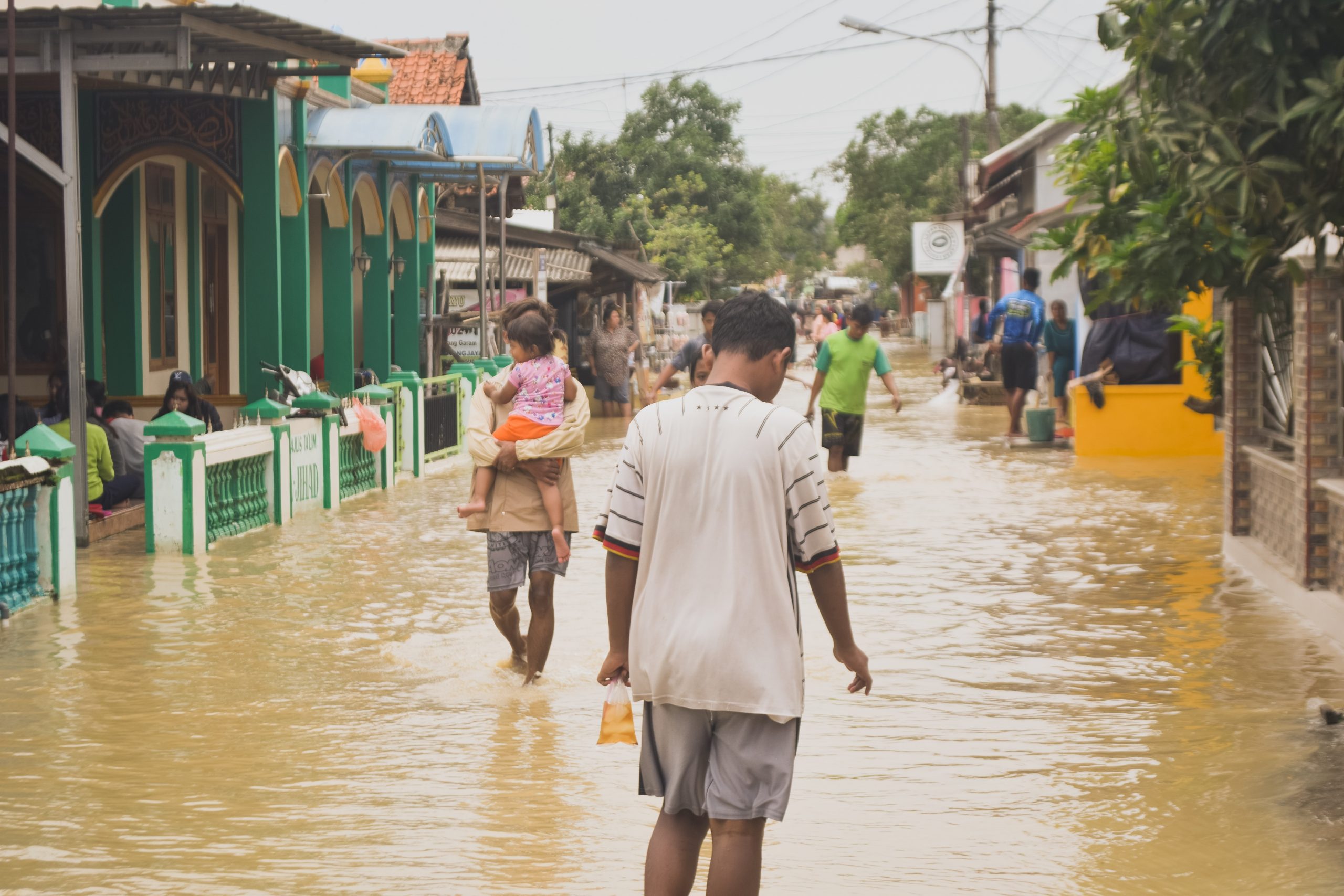Some numbers are a compass, a navigational tool that tells us where we are concerning the directions we intend to head. The 2023 edition of the European State of the Climate is one such tool that offers a snapshot of the state of the climate in Europe, but also of future prospects and the information that the climate system provides to the decision-making sphere to know the effects of climate weather events, identify future trends and design strategies and action plans.
Inside the numbers, maps, and graphs that make up the report produced by Copernicus and the WMO (read Marina Menga’s interview with Anna Lombardi to get to the heart of the creative and communicative effort behind each figure) is a portrait of last year’s European climate. Details that, for example, reiterate that 2023 was among the hottest years ever recorded, either the first or second hottest, depending on the dataset, with record numbers of days with ‘extreme heat stress’ and significant increases in heat-related mortality. While the report’s numbers provide a multi-disciplinary journey that delves into numerous subject areas (health risks, the ocean, water and energy resources, snow and glaciers), reading it reveals the relevance of data and research as a critical aspect of this knowledge. The accuracy of the information gathered in the report stems from the coming together of several factors that are crucial to advanced science in this century: the availability of a vast amount of climate data as never before, the ability to process it with innovative technologies – Machine Learning and Artificial Intelligence come immediately to mind – whose applications contribute to the development and use of models capable of producing increasingly detailed scenarios and simulations of the future to be applied to complex areas, to define an advanced understanding of the interactions between the climate system, development prospects, and people’s lives.
At the roots of the interaction between human societies and nature
“The report is not limited to the analysis of 2023 from the point of view of average climate conditions compared to the long term and the occurrence of extreme events, but also offers insights into some impacts – such as fires, floods, droughts, the effects of high temperatures – which in turn, through the responses of ecosystems and the services they provide, have destabilised the territory, leading to severe consequences for human well-being, society and the economy,” explains Monia Santini, director at CMCC of the Institute for Climate Resilience – ICR. “These aspects,” Santini continues, “add helpful information to the study of interactions in an increasingly complex natural-human system that influences the overall climate resilience and on which ICR seeks to shed light through the complementary activities of its Research Divisions, ranging from forest fires hazards, assessment of risks on water resources, health impacts, needs of energy for cooling or warming, and many others.”
“Observed trends in temperature, precipitation and extreme events, such as marine heat waves and droughts, underscore the importance of climate variability research,” emphasises Simona Masina, CMCC’s Institute for Earth System Prediction (IESP) director. “Understanding regional climate change, variability, and extreme events is among the central goals of IESP’s research activities,” continues Masina. “The increasing frequency of wildfires, marine heatwaves and floods provides opportunities for CMCC research on extreme event prediction and mitigation. This can help improve decision-making frameworks for adaptation and resilience. Marine heat wave events, for example, highlight the need to monitor and understand the responses of marine ecosystems to changes in ocean temperature, which is in line with the CMCC’s focus on ocean dynamics and biogeochemical cycles. The focus on health impacts and policy highlights the need for interdisciplinary research linking climate science with public health, urban planning and recommendations for decision-making, which builds on the highly integrated approach that characterises CMCC’s activities”.
The two CMCC scientists emphasise that the synthesis of results achieved by climate science is the result of one of the frontiers of research into complex issues: the ability to handle large amounts of data for analysis and forecasting at an ever-increasing level of detail.
A mine of data
“The European State of the Climate,” Santini explains, “is a snapshot of what was recorded in 2023, and it is based on authoritative sources of data from satellites and models, also combined into climate reanalysis like ERA5, one of the flagship products of C3S (Copernicus Climate Change Services), which in turn directly impact assessments. The CMCC – through the constant exchange and cooperation between its three Institutes – continuously inspires new scientific questions guiding researchers to understand those interactions among climate, ecosystems and societies that are still unknown or unclear”.
“Climate models, such as the ones we use at CMCC to simulate past, present and future climate conditions, incorporate complex atmospheric, oceanic and land surface processes, allowing researchers to assess the drivers of extreme climate phenomena, such as heat waves, droughts, heavy rainfall and storms, and offering insights into the frequency, intensity and spatial distribution of extreme phenomena,” continues Simona Masina. “By running ensemble simulations (a combination of several models, ed.) and scenario-based experiments, CMCC improves our understanding of the mechanisms underlying extreme weather phenomena and their variability under different climate scenarios and employs methods for quantifying and communicating uncertainties to improve the reliability and credibility of climate predictions and risk assessments”.
In this context, climate research is working in at least two directions, as Monia Santini explains: ‘We aim to advance research products and models, both in terms of spatio-temporal detail of existing data – an example is the downscaling of ERA5 on a 2 km x 2 km grid over Italy in near-real time, enabling more detailed quantification of impacts – and in terms of processes’ reproduction by exploiting the advantages brought by new and integrated technologies such as Artificial Intelligence and Earth Observation. In this way, huge amounts of accurate data can be quickly combined, revealing the existence of relations that might otherwise remain unexplored. This improvement in knowledge is also key for increasingly accurate predictions, in the short and long term, of the consequences of the future climate and its variability and of how different intervention scenarios, integrating mitigation and adaptation, could contain or reverse the expected impacts”.
Looking ahead to future challenges
The European State of the Climate translates the results of analyses of vast amounts of data from observations and models into indicators of shared understanding, thus offering a summary of the state of the climate and related consequences on Earth. By narrating the present, the report also points to future perspectives towards which the work of climate science is focused.
“Some future challenges,” Simona Masina continues, “include the capacity to develop model tools to capture variations in climate extremes, improved predictions and uncertainty evaluation at scales relevant for the social and economic sectors. Other challenges are related to strengthening collaboration across sectors (e.g., agriculture, water, energy, health) to formulate integrated adaptation strategies that account for compounded risks, improve data accessibility and develop user-friendly platforms to enhance the accessibility and application of climate data for various stakeholders, fostering better decision-making.”
From the snapshot of the current state of anthroposphere-biosphere interactions, three future challenges emerge, according to Monia Santini: “First, we need to make data more and more accessible through tailored services whose design is made in cooperation with end-users to maximise the effectiveness of the information produced while avoiding that it is easily disregarded. Second, we need to find a way to communicate the uncertainty and relevance to the information releases to enable end-users to exploit the products to inform planning and investments in a more robust manner. Third, we need to consolidate the bi-directional collaboration between science and policy communities to explore feasible and effective options for mitigating climate and its impacts by mimicking the possible behaviour of the interacting ecosystems and society under alternative scenarios of both climate and related interventions.”






